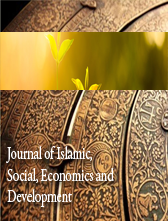EFFECT OF SENSOR GAP, LIGHT INTENSITY, AND TEMPERATURE ON PERFORMANCE OF OPTOCOUPLER
Abstract
Previous studies have utilized optocouplers that consist of Light Emitting Diode (LED) and photodiode or phototransistor pairs. However, these studies did not investigate how changes in the gap between the LED and photodiode would affect the output of the photodiode sensor. Therefore, this study aimed to explore the effects of physical factors such as changes in sensor gap, light intensity, and temperature on the output of the photodiode sensor in an optocoupler. The results showed that the increase in the gap between the LED and photodiode was directly proportional to the increase in the photodiode output, which consisted of various segments depending on the type of photodiode used. However, the output of the photodiode sensor decreased with an increase in light intensity due to destructive interference between the LED light waves and the ambient light waves that illuminated them. The study also found that the photodiode output did not significantly change with variations close to the room temperature













